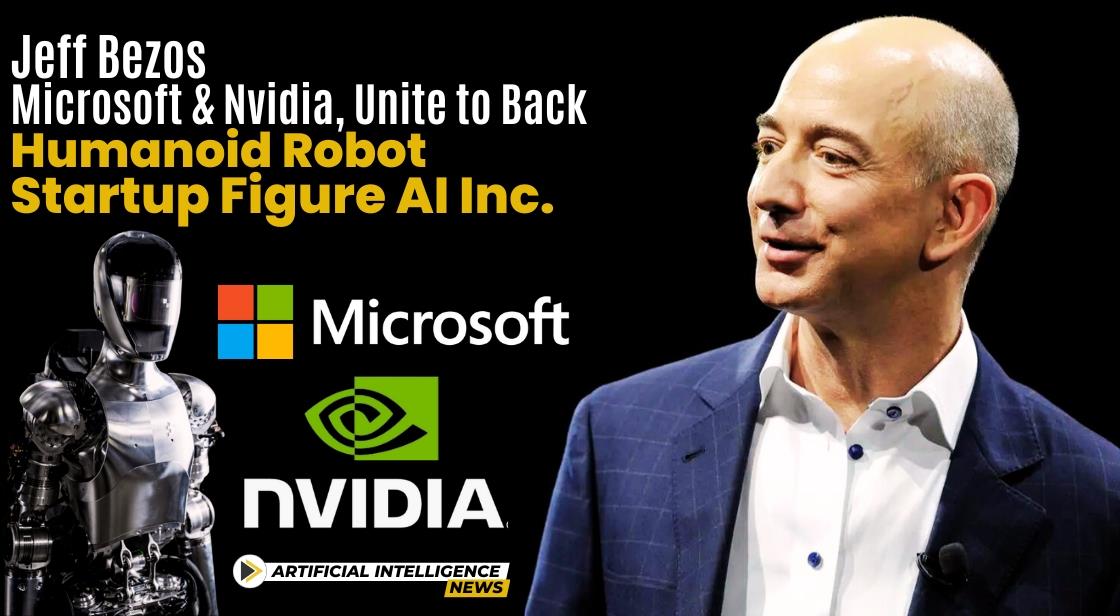Jeff Bezos, Microsoft, and Nvidia, Unite to Back Humanoid Robot Startup Figure AI Inc.

News Synopsis
In a groundbreaking move, Jeff Bezos, alongside major tech giants Nvidia and Microsoft, is investing in the humanoid robot startup, Figure AI Inc. The startup is in the midst of a funding round aiming to raise approximately $675 million, valuing the company at around $2 billion before the investment, according to reports from Bloomberg.
Investment Details: A Collaborative Effort
Jeff Bezos, through Explore Investments LLC, has committed a substantial $100 million to the funding round. Microsoft is contributing $95 million, while both Nvidia and an Amazon.com Inc.-affiliated fund are providing $50 million each. Other significant players in the tech industry, including Intel Corp.’s venture capital arm and LG Innotek, are also participating with investments of $25 million and $8.5 million, respectively.
Samsung’s investment group is committing $5 million, and venture firms Parkway Venture Capital and Align Ventures are investing $100 million and $90 million, respectively. OpenAI, which had considered acquiring Figure in the past, is contributing $5 million. The total funding of $675 million surpasses the initial target of $500 million that Figure AI had sought.
Who's Backing Figure AI?
The diverse consortium of investors behind Figure AI reflects the widespread interest in this burgeoning field.
Here's a breakdown of the key players:
-
Jeff Bezos: The tech magnate, through his investment firm Explore Investments LLC, committed a substantial $100 million.
-
Microsoft: The software giant contributed $95 million, demonstrating its belief in the potential of humanoid robots.
-
Nvidia: Renowned for its graphics processing units, Nvidia invested $50 million, potentially signifying its focus on developing the processing power needed for advanced robotics.
-
Amazon-affiliated fund: Highlighting the potential synergy with its existing operations, an Amazon-affiliated fund also contributed $50 million.
Figure AI's Vision: Humanoid Robot for Hazardous Tasks
Figure AI is at the forefront of developing Figure 01, a humanoid robot designed to mimic human movements closely. The company envisions utilizing this cutting-edge technology for tasks deemed hazardous for humans, addressing labor shortages and enhancing efficiency.
Impressive Capabilities of Figure 01
Figure 01 has already demonstrated remarkable capabilities, such as the ability to make coffee. This development aligns with a broader trend in the tech industry, where companies are actively working on humanoid robots capable of performing diverse tasks. Notably, Tesla Inc. has been pursuing a similar path with its humanoid robot, Optimus, designed to handle delicate objects and execute tasks like folding shirts.
Tech Industry's Growing Interest in Humanoid Robots
The significant investment by major tech companies in Figure AI underscores the escalating interest and potential within the field of humanoid robotics. As technology continues to advance, these investments indicate a collective effort to explore and leverage the capabilities of humanoid robots for various applications.
Why Figure AI Matters: A Glimpse into the Future
Figure AI's humanoid robot, Figure 01, has captured the imagination with its impressive feats, such as brewing coffee. This development aligns with the broader trend in the tech industry, where companies like Tesla are actively developing their own humanoid robots, such as Optimus, capable of performing complex tasks.
The significant investment in Figure AI by leading tech companies serves as a strong indicator of the growing interest and immense potential within the humanoid robot sector. As the technology continues to evolve, Figure AI, backed by a consortium of industry giants, is poised to play a pivotal role in shaping the future of robotics and transforming various industries in the years to come.
Some of the key capabilities of Figure 01 include:
Human-like activities: This robot is capable of performing human-like activities, such as walking, running and picking up objects.
Recognizing and using objects: This robot can recognize and use various objects, such as cups, bottles, and tools.
Learning and Adaptation: This robot can learn from experience and improve its performance over time.
Collaborative work: This robot can work collaboratively with other robots and humans.
Figure 01's capabilities can be used for a variety of tasks, including:
Automating dangerous or difficult tasks: This robot can be used to perform tasks that are dangerous or difficult for humans, such as handling hazardous materials or working at heights.
Improves productivity and efficiency: This robot can improve productivity and efficiency by automating tasks and freeing humans to focus on more creative and strategic tasks.
Improve quality of life: This robot can improve the quality of life by assisting the elderly and disabled people.
Figure 01's development is still in the early stages, but its capabilities indicate promising prospects for the future of robotics.
You May Like









